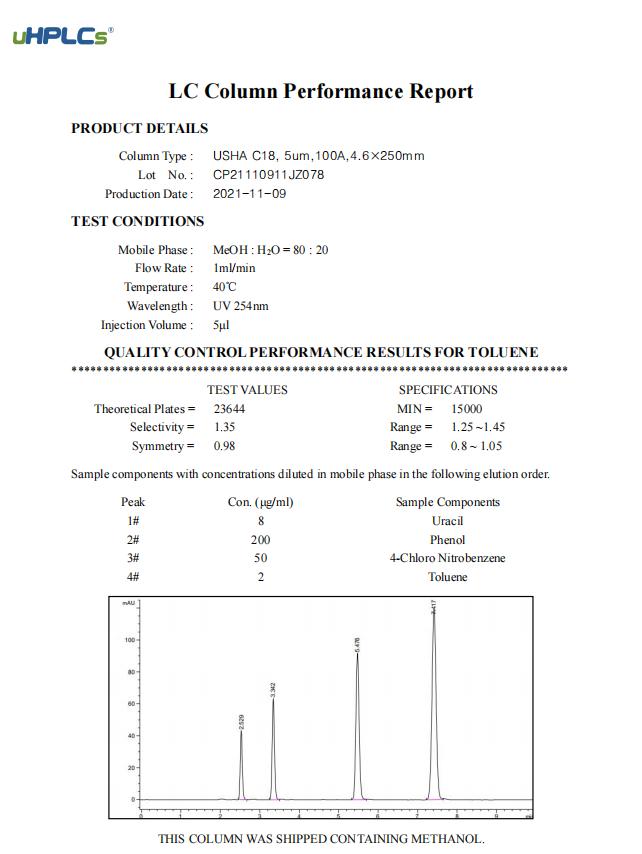Column analysis performance with COA.
Students and researchers often ask us
>Can I still use this lc column I bought 3-6 years ago?
>I have heard from my senior that he has only used it 5 times, but his analysis is that it works well, right?
>I found it in the warehouse, but I don’t know when I bought it. Can I use it?
This is when we encounter such problems.
Uniform standard answer: Please help me with the COA for this column.
** The COA is always in the box of the column **
What is COA?
Certificate of analysis
Each column has its unique certificate.
When the column is ready to leave the factory, the last step is to take it to the laboratory for testing.
The last step is to check that the analytical results meet the standards set by the company. This is where it is stated what analytes, conditions, machines, etc., they used.

Simply put, there should be a chart with the retention time on it as well.
**This picture is of our C18 column**.
Each brand has its layout, so it may be slightly different.
How do I check?
Get a COA
1. make sure it is the right column for the test. (p/n. The row of numbers)

2. Does the machine use RI or UV? (Detector row)
3. Flow rate setting/wavelength setting / other conditions setting

4. Which analyte is it? (in the Elute row or next to the diagram)
Usually, there are 3-5 analytes, so pick one to test!
Choose a drug already available in the laboratory and configure it to the appropriate concentration for the test.

5. Finally, compare the results of your hand testing!
Look at the Rt. (Retention time): whether the time is close to the COA
Theoretically, we can see that a difference in retention time of about 0.5 seconds is acceptable, but if you are still worried
If you are still concerned, we recommend you choose another COA analyte and do another test.
6. If the pattern is close to the COA, you will be congratulated for continuing to use it.
If the difference is greater or the whole pack becomes strange, you will be advised to replace the hplc column.
(It is reasonable to replace columns regularly as they are consumables)
After learning how to determine COA
Here we explain why we cannot directly answer the three questions we asked at the beginning.
The reason: each laboratory uses different samples/conditions/solvents/environments
In addition, HPLC is a micro-analytical machine, so any slight difference will affect the results.
Some laboratories may have a lot of impurities in their samples, so that the column may block after 20 strokes.
Some laboratories are doing standard tests, easier than samples, so the column’s life can be extended.
Some operators may neglect to clean the column after use, clogging it with impurities that crystallized over time.
These are all possible reasons why the column may not be used any longer.
The results of the COA test are the best judge!
Post time: Oct-27-2022






